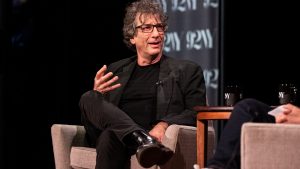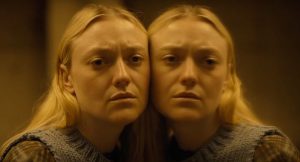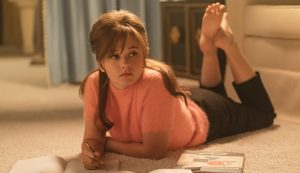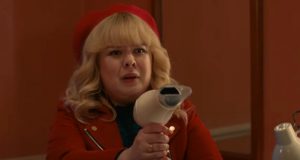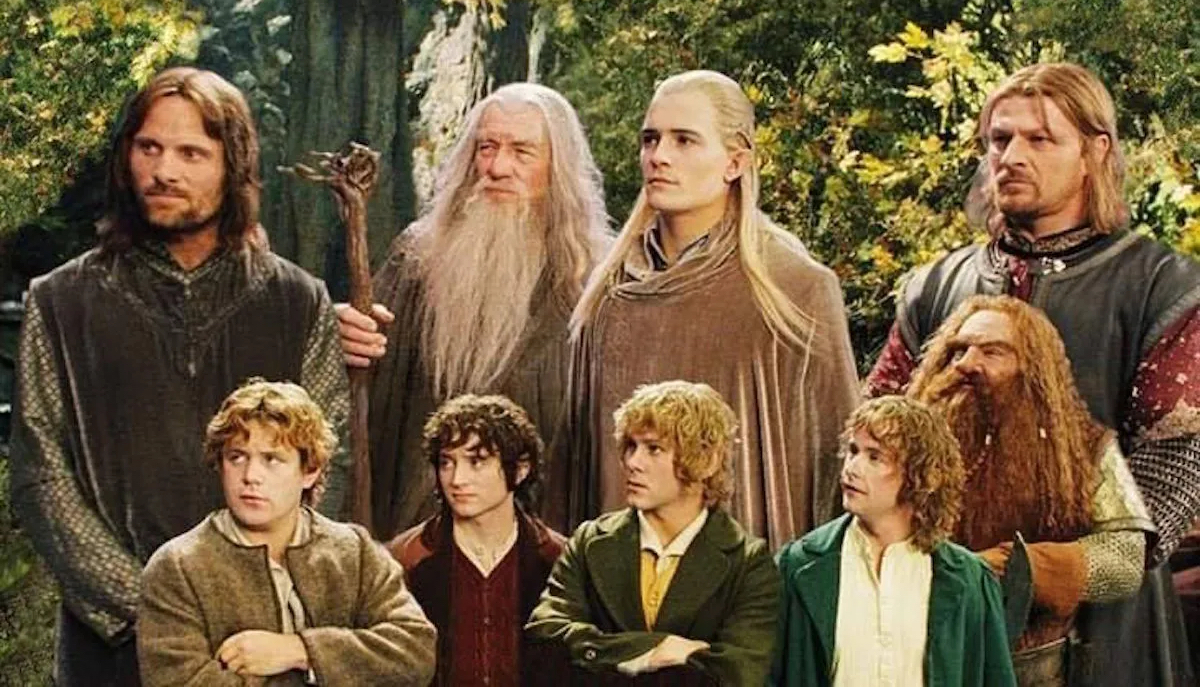
This year marks the 20th anniversary of The Return of the King, the final part of the Academy Award-winning The Lord of the Rings trilogy. Adapted from celebrated author J.R.R. Tolkien’s high fantasy novels of the same name, these films more than just introduced the iconic realm of Middle-earth to millions of fans around the world; they became legends in their own right. So much so, The Lord of the Rings has become a holiday staple celebrated by millions around the globe.
Indeed, despite being set in a world without the usual Yuletide trappings, this trilogy has quietly become something of a Christmas tradition, and an annual viewing appointment every December. Here’s how the films’ surprise connection with the holiday season began, why they’re so perfectly suited for the festive start of winter, and how The Hobbit trilogy only strengthened the association a decade later.
An Annual Tradition
Drawing from my own memories, the hype building up to The Lord of the Rings debut in theaters in December 2001 was enormous, with the trailer attached to virtually every major Hollywood release in the latter half of the year. Harry Potter ads were omnipresent too, but even the marketing for The Sorcerer’s Stone presented it for the kid’s movie that it was; The Fellowship of the Ring felt like an event. That level of anticipation led to a sellout opening weekend nationwide when I sat down with my family in a packed theater in Manassas, Virginia, ready to catch our first cinematic immersion into Middle-earth.
To the cast and crew’s credit, The Fellowship of the Ring blew our expectations out of the water, with the audience clapping and gasping at all the right moments (the Bilbo Baggins jump scare still haunts a generation decades later!). My parents tolerated the Harry Potter movies, with their hammy acting and slapstick gags. They loved The Lord of the Rings, and so did I and my younger sister. It was one of the few movies at the time that the entire family could truly enjoy with its broad appeal and timeless messaging.
After having such an awesome shared experience in December 2001, watching the two subsequent films became something of a family tradition. Each following holiday season, we would make the time to sit in a full theater watching the movie with rapt attention, and everyone breathlessly anticipating the battle of good and evil as Sam and Frodo continued their long trek to Mount Doom. With December 2004 and the glaring absence of a new Lord of the Rings film, I feel like I’ve been chasing that high ever since.
I apparently was not alone.
Fun for the Whole Family
Beyond Harry Potter, which only shared the first two holiday season releases in 2001 and 2002, it’s worth noting that The Lord of the Rings had a broader appeal than many of its contemporary competition in theaters. The Fellowship of the Ring was released two weeks after Ocean’s Eleven, for example, and two days after the critically acclaimed biopic, A Beautiful Mind. Both movies were successful in their own right, with the latter eventually even winning a Best Picture Oscar. But both were significantly outperformed by The Fellowship of the Ring, which earned over $898 million globally, and it is fair to argue neither has lasted as long in the cultural memory either.
The more family-friendly distinction is obviously something that immediately helped in 2001 and which carried over to the sequels, with The Two Towers opening in the same holiday season as Gangs of New York, Catch Me If You Can, and Chicago; while The Return of the King opened opposite award season fare like Something’s Got to Give, Cold Mountain, and Mona Lisa Smile. The Lord of the Rings films reigned supreme three Christmases in a row, with The Two Towers earning nearly $950 million worldwide and The Return of the King earning over $1.1 billion, making it only the second film to do so.
To be fair, there were other kid-friendly movies during those holiday seasons: Jimmy Neutron: Boy Genius, The Wild Thornberrys Movie, and the 2003 Cheaper by the Dozen remake. But they were all geared toward much younger viewers and were outperformed by The Lord of the Rings by a huge margin. Audiences worldwide flocked to the cinema every December to see the latest Lord of the Rings flick because they felt intense enough to appeal to more mature viewers but just warm and cozy enough to not put off young viewers. Yet there is a reason they have lasted in the pop culture memory as a December event beyond their opening weekends…
Holiday Themes
The other factor is that The Lord of the Rings’ narrative and messaging had a universal appeal to multiple demographics and global markets. At first glance, there is nothing overtly festive about the narrative themes in the Lord of the Rings. However, the idea of people from different backgrounds coming together to vanquish evil certainly is a broadly understandable and enjoyable narrative. That the evil in question are orcs developed by Weta Workshop using largely practical effects also solidly dehumanizes them, giving the fight scenes more palpable escapism without any sense of moral ambiguity.
The ostensible heroes of the story are also Middle-earth’s most unassuming race, the Hobbits, who are underestimated for much of the trilogy by the other creatures of the realm. Though Frodo Baggins gives in to the temptation of the One Ring of Power as he enters Mount Doom, the theme of the meekest among Middle-earth being best-positioned to deliver salvation has a wide appeal. Frodo is set up as something of a messianic figure, which is also in line with Christmas’ messaging, even if it’s the lowly Gollum that ultimately saves the day. Truly, it is the meek that inherit the Earth.
Those Judeo-Christian themes certainly aren’t included in the movies by accident. Tolkien was himself a lifelong devout Roman Catholic who imbued his work with his theological outlook. From the death and resurrection of Gandalf over the course of the trilogy to grace and humility triumphing over the temptation of pride, as embodied by Boromir’s fall to its temptation for the One Ring and his later redemption, there are plenty of Christian sentiments throughout The Lord of the Rings. Frodo and Sam endure their own grueling walk to Golgotha, so to speak, but instead of a wooden cross, it’s a small golden ring, with Frodo sacrificing a piece of himself to save the forces of good.
As secular as Christmas may have become, particularly in regards to its widespread commercialization, it is still fundamentally a Christian holiday. This parallel in themes of salvation and good triumphing from evil helps solidify The Lord of the Rings movies’ connection with the Christmas season, even with the apparent lack of an explicitly divine presence in Middle-earth.
A Timeless Classic
Even two decades later, people still look back at the Lord of the Rings trilogy fondly and its reputation has only grown stronger as high fantasy movies and TV shows have flourished in recent years. Less than a decade after The Return of the King left theaters, HBO launched Game of Thrones, while shows like The Lord of the Rings: The Rings of Power keep Tolkien in the public consciousness. Thanks to healthy fan interest, The Lord of the Rings never felt like it faded in relevance, but has become something of a cultural touchstone.
People still share memes based on The Lord of the Rings, indeed some of the first generation of widespread online memes involved the trilogy. This includes remixing dialogue and scenes from the movies to create an impromptu song of Legolas declaring, “They’re taking the hobbits to Isengard” or Sam informing us of the many uses of potatoes, “to boil them, mash them, stick them in a stew.” These memes help keep movies alive in a good-natured and proto-viral sort of way.
Another factor in The Lord of the Rings’ enduring appeal also comes from the sheer quality behind the ambitious production. Having approximately a year of post-production per film really gave the filmmakers time to polish the movies, with Jackson filming six weeks of additional photography for each installment. This attention to quality really gives the Lord of the Rings trilogy a timeless appeal that stood out at a time when Hollywood was leaning more into CG, like with the Star Wars prequels which were running concurrently in the early 2000s. By contrast, Jackson kept quite a bit of his work in-camera rather than adding everything in post-production.
The Hobbit Trilogy’s Holiday Revisit
Jump ahead a decade and it’s December 2013, with the release of The Hobbit: An Unexpected Journey now upon us. At this point, I had been excitedly following the production news for months, ready for a return to Middle-earth as interpreted by Jackson et. al for Tolkien’s even more family-friendly novel. Warner Bros. really leaned into the holiday season connection too, with the marketing for the Hobbit trilogy, particularly with An Unexpected Journey. One of the more prominent posters for the 2012 film featured Bilbo Baggins, Gandalf, and the company of dwarves seated around a dinner table with a full, festive meal laid out, practically inviting viewers to join them at an open seat for the holidays.
Seeing the movie again with my family, we enjoyed moments from the film, but, to my continued chagrin more than a decade after the fact, we didn’t connect with it on nearly the same level, nor connect with each other in appreciating it.
It was a bit more of a chore to rally the family the following December for The Desolation of Smaug and, with the trilogy’s 2015 conclusion, The Battle of Five Armies, I went without them. Simply put, the magic was gone. Rewatching The Lord of the Rings trilogy remained a tradition every Christmas season. Adding The Hobbit trilogy to that tradition didn’t take.
The Lord of the Rings was the first movie series, at least in its wide theatrical release, that my family and I all enjoyed—each for our own respective reasons, to be sure, but with the baseline that we all thought it was a great film. From its lush depiction of Middle-earth and memorable characters to its broader messaging about good triumphing over evil incarnate, The Lord of the Rings joins Die Hard, Batman Returns, and On Her Majesty’s Secret Service in the pantheon of unlikely Christmas movies. And for all the butchering of orcs and trolls, The Lord of the Rings trilogy is oddly all the more wholesome than many of its counterparts.
Trashed Content
Pre-production on The Lord of the Rings began in earnest in 1997 after New Line Cinema picked up the rights to the franchise following Miramax passing on the project. Principal photography lasted from October 1999 through December 2000, with the three movies making up the trilogy filmed concurrently primarily in New Zealand. The post-production team was given approximately a year to complete each film and, with this level of planning and allowances on the production schedule, were able to consistently produce each movie on time.
A Worldwide Smash
The first two installments of The Lord of the Rings trilogy also faced release window competition from the first two Harry Potter movies. Though Harry Potter initially was aimed at younger audiences than The Lord of the Rings, there was a cross-market appeal and superficial genre similarities, with both franchises adapting British fantasy novels. Interestingly enough, both film franchises were produced and distributed by Warner Bros., effectively giving the studio holiday season domination between 2001 and 2003 at cinemas worldwide.
However, by the time The Return of the King was released, Harry Potter had changed its release strategy, with its third installment, Harry Potter and the Prisoner of Azkaban, released the summer of 2004. Unlike The Lord of the Rings, the Harry Potter movies were not filmed simultaneously, with nearly three times the number of installments and the source material still being published when the film series began, this would’ve been a logistical impossibility. Instead Harry Potter movies began alternating between holiday season and summer releases, with only 2005’s Harry Potter and the Goblet of Fire and 2010’s Harry Potter and the Deathly Hollows – Part 1 reverting to holiday season releases.
Harry Potter vacating the holiday release window for half of its films weakened its seasonal association. Free of the direct competition, The Lord of the Rings became the undisputed movie to check out in the 2003 holiday season, seeing a marked improvement in its performance at the global box office. The Return of the King became the only film in the Lord of the Rings trilogy to earn over $1 billion at the box office and the highest-grossing film in the franchise, outperforming 2013’s The Hobbit: An Unexpected Journey ten years later.
After a year of post-production, the release date for The Lord of the Rings: The Fellowship of the Ring was set for Dec. 19, 2001. The middle film in the trilogy, The Lord of the Rings: The Two Towers, maintained the same week before Christmas release strategy, with its wide release on Dec. 18, 2002. Finally, The Return of the King mirrored this schedule exactly one year later, opening Dec. 17, 2003.
Any tradition demands a sense of consistency and The Lord of the Rings was able to maintain an annual release schedule every holiday season as families came together at the end of the year. This tradition expanded to its home video release schedule—while the theatrical editions of the trilogy were released on DVD each subsequent May, the extended editions were released the week of each follow-up film to capitalize on the synchronized marketing. With these extended editions seen as the definitive versions of each movie by fans and filmmaker Peter Jackson, it prolonged the annual tradition.
The Lord of the Rings unquestionably ruled movie theaters during the holidays from 2001 to 2003 and then ruled home video charts during the holiday season from 2002 to 2004.
The Return of the King went up against largely award season fare, with its biggest competition being the romantic comedy Something’s Got to Give, while critical darlings Cold Mountain and Mona Lisa Smile each earned less than $200 million. As previously mentioned, The Return of the King earned over $1.1 billion, the second film to do so, beaten to the mark only by James Cameron’s Titanic six years prior.
There were kid-friendly movies released in each of these periods, including 2001’s Jimmy Neutron: Boy Genius, 2002’s The Wild Thornberrys Movie, and 2003’s Cheaper by the Dozen. While each successful to varying degrees, they performed even weaker against the corresponding The Lord of the Rings movies and contemporary award-oriented releases.
The Lord of the Rings felt enough like an event not to be missed, was intense enough to appeal to older viewers, and yet action-packed enough to hold the attention of younger audiences within its PG-13 demographic, that the trilogy went relatively unmatched for cross-market success.
The Lord of the Rings’ appeal also comes from the sheer quality behind the ambitious production. Having approximately a year of post-production per film really gave the filmmakers time to polish the movies, with Jackson filming six weeks of additional photography for each installment. This attention to quality really gives the Lord of the Rings trilogy a timeless appeal that makes it stand the test of time as a regular holiday rewatch.
This attention to quality really gives the Lord of the Rings trilogy a timeless appeal that makes it stand the test of time as a regular holiday rewatch.
This quality extends to the art and production design, from the rustic homes of Hobbiton to the marbled citadels of Minas Tirith. There is a cozy, lived-in quality to The Lord of the Rings, keeping as much as it can in-camera at a time when Hollywood blockbusters were moving towards more CG effects and backgrounds, led by the Star Wars prequels, which were running concurrently. That comforting aesthetic is something that more subtly underscores the holiday connection while lending a greater sense of prestige to the production overall, giving the audience a tangible environment to immerse themselves in.
When Jackson returned to the world of Tolkien, adapting The Hobbit into its own trilogy of films from 2012-2014, the release strategy mirrored The Lord of the Rings, with each movie released during the holiday season. Say what you will about the quality of The Hobbit compared to The Lord of the Rings (and plenty has already), but the Hobbit trilogy was financially successful during its theatrical run, with An Unexpected Journey alone earning over $1 billion. This holiday season release window continued to help the franchise, even as audience and critical reception grew divided.
Warner Bros. really leaned into the holiday season connection with the marketing for the Hobbit trilogy, particularly with An Unexpected Journey. One of the more prominent posters for the 2012 film featured Bilbo Baggins, Gandalf, and the company of dwarves seated around a dinner table with a full, festive meal laid out practically inviting viewers to join them at an open seat for the holidays. The two subsequent installments downplayed the holiday connection in the marketing, but were more explicitly set during the winter season to link the yuletide aesthetic.
The post The Lord of the Rings Movies Are the Ultimate Christmas Movies appeared first on Den of Geek.

